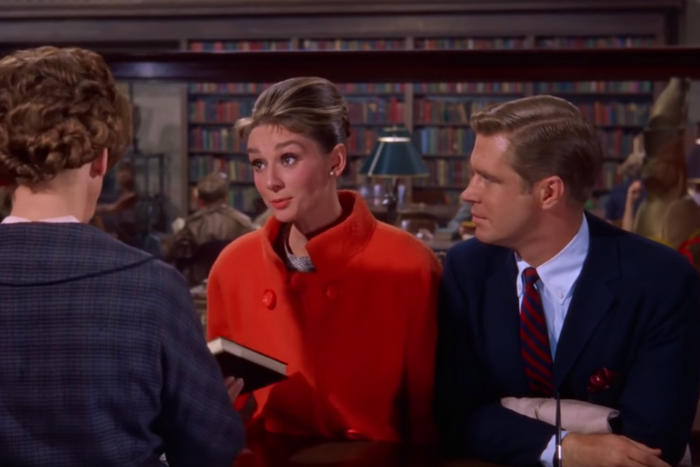
The 42nd Street main branch isn’t simply for tourists taking lion selfies or researchers hunching over obscure first editions. In fact, catching a peek of the “stacks train” and poking through a collection of 200-year-old menus is one of the best ways any New Yorker can spend a freezing Saturday afternoon. Here’s how to navigate it all, according to author Ada Calhoun, librarian Rebecca Federman, and photography curator Julia Van Haaften.
➽ Get a library card. The 42nd Street branch is a research library, which means you can’t take books out (the exception is the children’s section). But you’ll need a card to look at the rare editions, photographs, and ephemera in the building (which can be reserved in advance by emailing the library, or you can ask in person; if a book you’d like is in the stacks, it’ll take about 45 minutes to come up). Apply online, then go pick up the card in the Bill Blass Public Catalog Room on the third floor.
➽ Make a right in the Rose Main Reading Room. The most famous spot in the library, designed by Carrère and Hastings, runs the length of two city blocks and has 52-foot-high gilded ceilings covered in murals by James Wall Finn. (The ceilings also have 900 plaster rosettes — one of which fell in 2014, prompting a $12 million restoration.) Tour groups are shepherded to the left, leaving the right side of the room available for people to work quietly. Per Ada Calhoun, “It feels very luxurious to charge your phone at one of the heavy wood desks.”
➽ Find a less obvious lion. There are the two that sit out front, of course (Patience and Fortitude), but the library is filled with them. “I like the lion water fountains next to the Cullman Center on the second floor best,” says Calhoun. “They have these surprised-looking eyes.” Rebecca Federman recommends the ones in the children’s center: “The room has the original Winnie-the-Pooh doll from the 1920s, but I love the giant lions made out of Legos.”
➽ Walk down to the South Court. It’s a six-story glass-enclosed structural addition on the south side of the building. “The stairs wind around in a circle down to the basement. It’s exciting to get deeper and deeper in the building,” says Julia Van Haaften.
➽ Then walk back up to the Wachenheim Gallery. “In the ’70s, if you had a book contract and wished to smoke, that is where you’d go,” says Van Haaften. It’s also a jewel box of a space — the marble walls and pilasters have the most lovely ornamentation.”
➽ Go down a photographic rabbit hole. The Picture Collection on the first floor comprises about 1.5 million clippings, all kept on browsable shelves in Room 100. “I went down once looking for images from TV sitcoms and found a whole folder filled with pictures from The Facts of Life,” says Federman. Van Haaften is partial to the 72,000-piece trove of stereoscopic views of everything from rocks in the Cañon de Chelle to a steamer loading cotton in Mobile, Alabama, in the Photography Collection on the third floor.
➽ Admire some Richard Haas murals. There are 13 of them in the DeWitt Wallace Periodical Room on the first floor. Each depicts a building associated with periodicals publishing in New York, like the Reader’s Digest Building in Pleasantville.
➽ The stacks are closed to the public, but you can watch books come up on the conveyor belt. In 2016, a train system was installed to carry books up from the stacks. It consists of 24 electric “cars” that travel along a 950-foot track. “Most of the belt is behind the scenes, but you can see a bit of it if you go to the windows along the south side of the Rose Main Reading Room,” says Federman.
➽ People-watch on the second floor. The study areas (the Astor Room, the Shoichi Noma Reading Room, the Allen Room, and the Wertheim Study) are reserved for researchers or for writers with book contracts but are accessible to members of the general public as long as you fill out an application beforehand on the library’s website. “I haven’t seen Robert Caro there, but a lot of people I know have,” says Calhoun. “And the Wertheim Study feels like a New Yorker cartoon — lots of academics working on dissertations. It’s the only place in the library I’ve ever been shushed.”
➽ Make an appointment to see the Berg Collection. Email [email protected] to set it up. The room is on the third floor (Room 320) and contains 500 of Charles Dickens’s letters as well as his desk and lamp. It also has, Calhoun says, “one of the hottest card catalogues around. Like, if you have a fetish for card catalogues, that’s a good one.”
➽ Go down the hall to the Rare Book Division, in Room 328. You just have to register with a librarian when you arrive. Van Haaften recommends tracking down the Buttolph Collection of Menus, which consists of more than 45,000, some nearly 200 years old — like an 1854 dinner menu from the Astor House.
➽ Use the third-floor bathroom. Calhoun says, “The first-floor one always has diaper changes going on because it’s right by the children’s room. The second-floor one is kind of crowded, small. But the third-floor one is very roomy and nice.”
*This article appears in the February 17, 2020, issue of New York Magazine. Subscribe Now!

